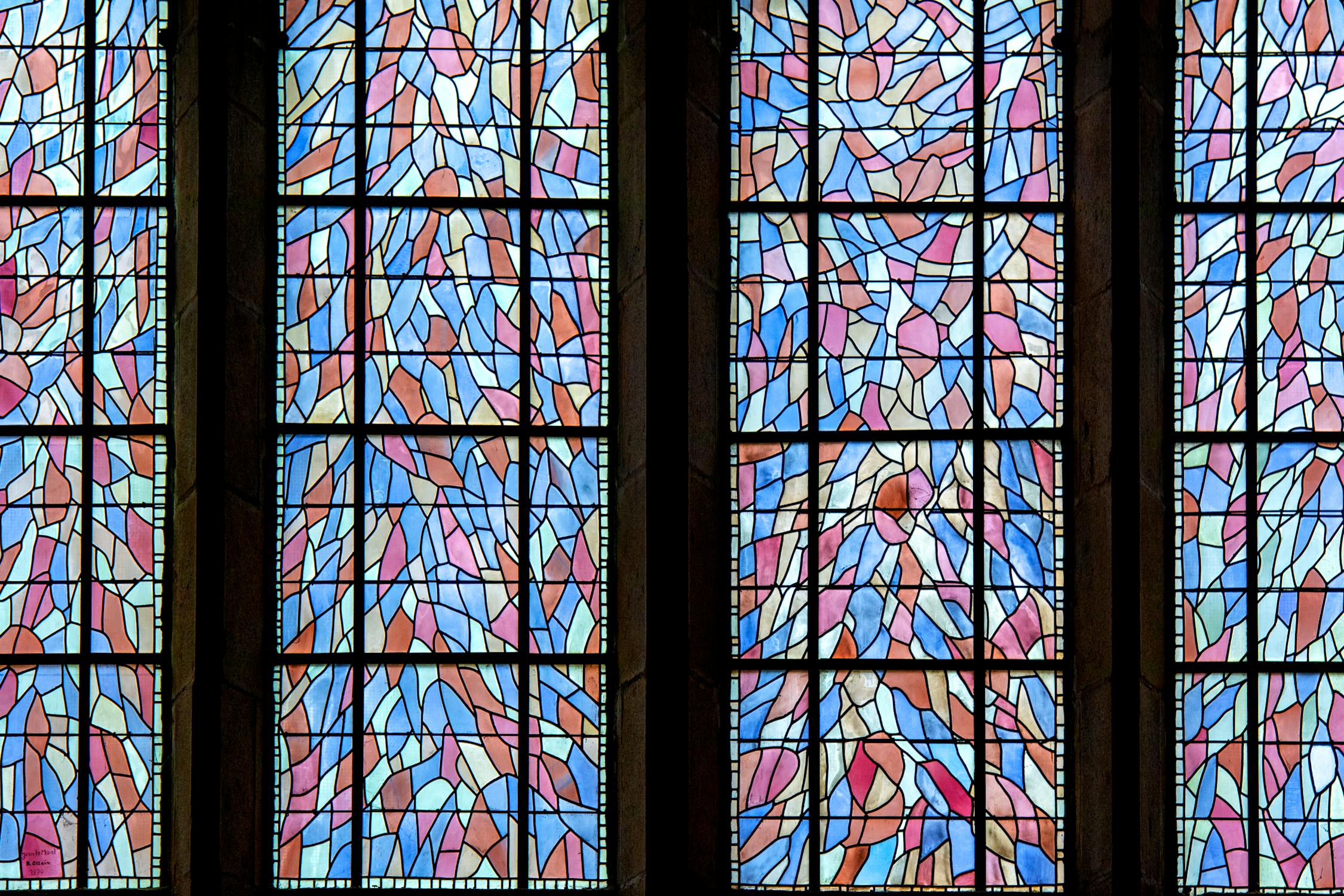By Chelsea Barnwell

Just stepping into the sanctuary of First Baptist Church in Nashville made me laugh to myself. I love old buildings and architecture, but distinctive 60’s architecture is sometimes…a bit much. This sanctuary had nearly all the classic Mid-Century Modern design features; clean lines, unexpected geometric patterns, sunken and raised levels (I’m sure insurance companies hate that part), large windows, and warm colors. It was very easy to identify when the sanctuary had been built, even before I saw the plaque dating it to 1969.
The brick-walled, cruciform-shaped sanctuary had floor level and balcony level seating. I was there with other staff from my church at a breakout session during a conference. When I couldn’t find anyone from my group on the floor level, I went up to the balcony. I tend to think of balcony seating as overflow, or even worse, associated with old segregation laws. In this particular church, it somehow felt like preferential seating. Once in the balcony, my smile started to change from one of amused condescension toward the “dated” design choices to an impulse to laugh for true joy.
The stage area was sleek, light pine. Behind the stage, climbing the full length of the wall (3 or 4 stories high) was a huge stained-glass window. While the rest of the sanctuary was made up of a clean, straight lines, the stained-glass danced into whimsy. Bright colors, unusual shapes, blurred seams, gradually moved from a dark blue base to brighter and lighter colors toward the roof, culminating in a great, bright, undefinable shape, like a beam of light at which you cannot look directly. On either flank of the stained-glass window, the organ pipes were displayed up the walls as an artistic feature. Large circular stained-glass windows (of similar 60’s flare) were set over each balcony wing and there were several long narrow vertical stained-glass windows behind the center balcony.
Sandra McCracken led the sing along. As we listened to some songs and stood to sing along with others, I could clearly see the stage below. However, my eyes were often drawn upwards to the gleaming organ pipes and colored glass, and finally to the ceiling with its simple beam work painted white. It was quite the contrast to my home church, where I am used to looking up at HVAC vents, speakers, lighting rigging, and heavy wiring, all in shades of black to make them disappear into the shadow of the ceiling.
When the sun came out, the stained glass let in warm colorful light from all sides. As we sang, the cruciform shape made it feel that we were singing to each other. We were offering praise to God, but we were also reminding each other of the truth. We sang “Steadfast” and “We Will Feast in the House of Zion” along with many classic hymns. Never have I felt so keenly Winston Churchill’s words, “We shape our buildings; thereafter they shape us.”
Of course, the beauty of this experience is not unique to the Mid-Century Modern design. These features were borrowed from much older traditions of lofty, bright ceilings which draw the eye upward to God in hope and worship. The very shape of the building reminds us of the cross of Jesus while functionally connecting us as we face one another. The use and beauty of natural light coming in through the stained-glass by day is also an ancient tradition. At night, the windows allow the light from the church to shine out into the community. A lesser light than the sun, but a reflection of it, like a city on a hill which cannot be hidden.
Beauty can be costly. Beauty requires more time, more labor, and often higher quality materials than the ugly or commonplace. Of course, his Spirit enables us to worship anywhere in Spirit and truth, no matter our surroundings. Yet, God delights in an offering of beauty.
Mary did a beautiful thing when she extravagantly poured expensive ointment over Jesus’ head and feet. Jesus commended her for doing a beautiful thing and her story is to be told wherever the gospel is proclaimed. As Gerard Manley Hopkins said, “Give beauty back, beauty, beauty, beauty, back to God, beauty’s self and beauty’s giver.”
About the Author

Chelsea Barnwell is a writer, deep thinker, and avid reader. She currently lives in a historic carriage house in the Blue Ridge Mountains. She has been published by Calla Press and the Rabbit Room. You can read more of her work on her blog welcometothecarriagehouse.com.
